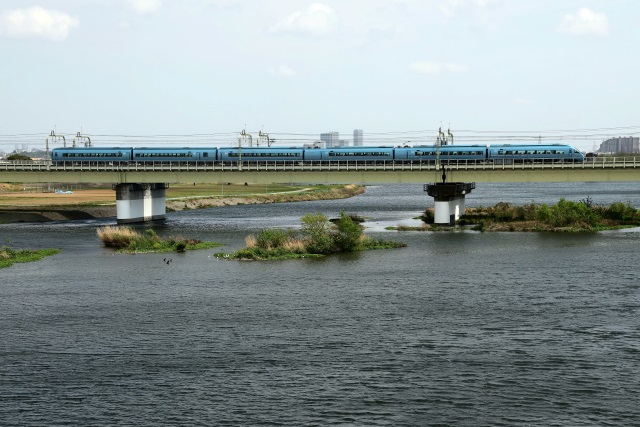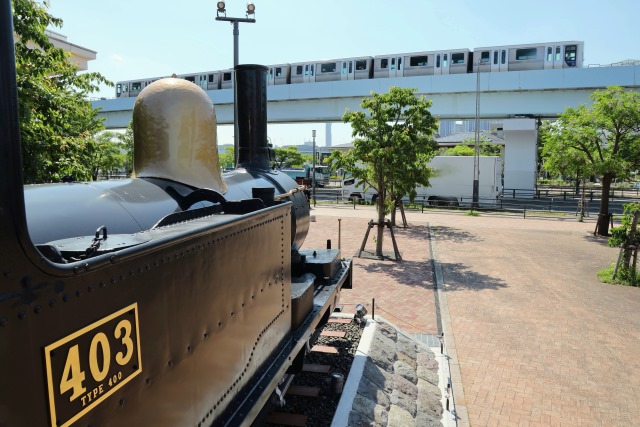Keio Electric Railway currently holds a seasonal campaign named "Takao and Jinba Stamp Hike". The purpose of this campaign is to promote tourism to Mt. Takao and Mt. Jinba on the Keio lines. Stamp Hike means going to different locations on the hiking trails, and collecting stamps on a specific card. You can then win prizes according to the number of stamps you collect. As a part of this campaign, Keio is displaying special revival plates on the front of the specific trains. One is Takao, and the other one is Jinba. Those plates are drawn in a nostalgic design. Keio operated limited express trains Takao and Jinba from 1967 to 1992 displaying these plates.
Let's look at each one of those specific trains in a bit more detail. The "Takao" plate is displayed on the front of set 8713 of the EMU 8000 series. Set 8713 is Keio's poster train to promote tourism to Mt. Takao. The green-colored bodies are a revival of Keio's old train, for example, the 2010 series. On the other hand, the "Jinba" plate is displayed on the front of set 7705+7805 of the EMU 7000 series. Set 7705+7805 is just an ordinary commuter train, but they are slightly different if you look carefully. Set 7705 has stainless-steel bodies with corrugations; meanwhile, set 7805 has bead-press stainless-steel bodies. Rail fans like me enjoy the subtle differences in each train. That kind of observation doesn't matter to non-rail fans, but it makes rail fans very happy.



















